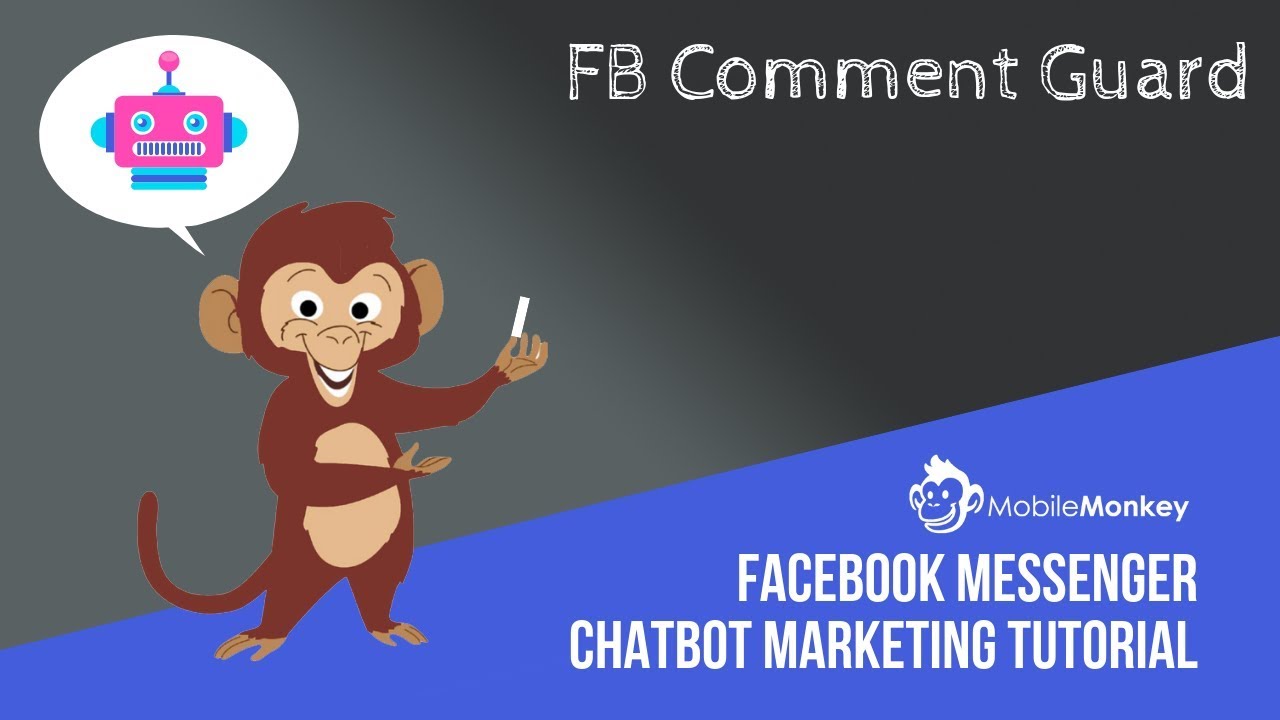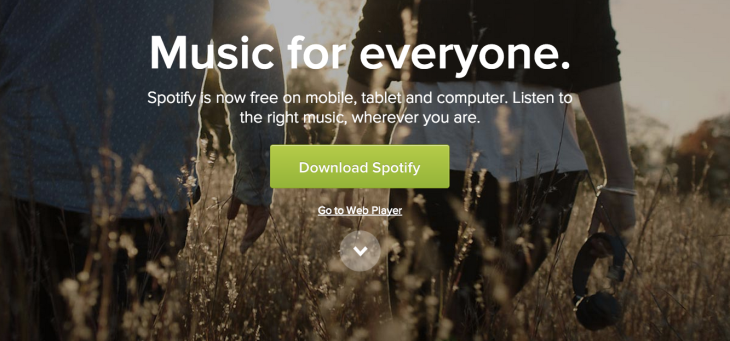10 Growth Marketing Tactics To Grow Your Business
Are you looking to grow your business?
Read on to discover 10 growth marketing tactics!
10 Growth Marketing Tactics To Grow Your Business
Growth Marketing Tactic #1 – Sniply
Would you like to increase your conversion rates? Sniply is a great tool to achieve this goal.
Sniply is a simple tool that allows you to overlay your own custom message onto any piece of content, creating an opportunity for you to include a call-to-action with every link you share.
People use Sniply to drive conversions from every piece of content they share. You can drive traffic to your website, downloads of your app, registrations for your event, customers for your service, and more.
I created my first snip in 2 minutes and I chose to place it on one of Seth Godin’s blogs as you can see below:
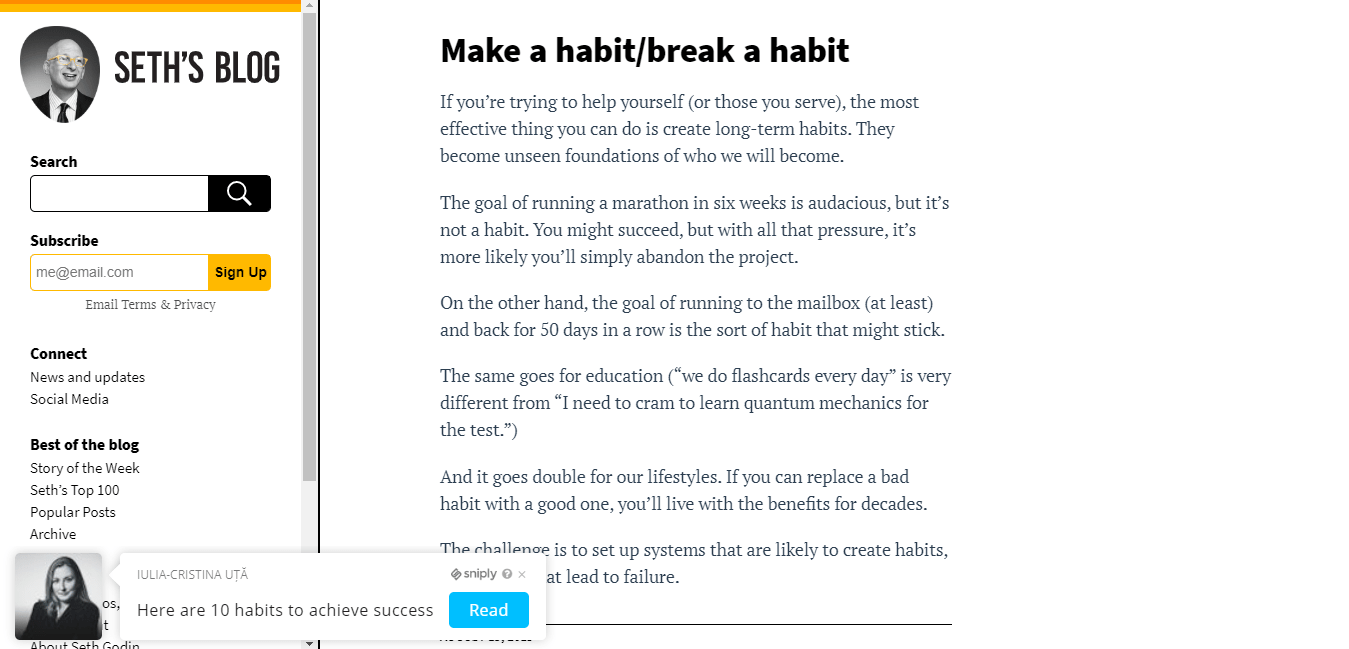
Key takeaways:
- Make sure the page which hosts your snip and the page your snip sends visitors to match ie your content is relevant to the visitors of the host page;
- Create a clever CTA.
Growth Marketing Tactic #2 – LinkedIn Engagement Pods
Engagement pods started on Instagram and in recent years migrated to LinkedIn.
What are LinkedIn Engagement Pods?
LinkedIn Engagement Pods are private groups of Linkedin users who are all focused on engaging in and sharing other people’s LinkedIn content.
It’s a way to boost your post’s visibility on LinkedIn. This engagement gives your post a little nudge in the right direction but only if it’s high-quality content.
LinkedIn Engagement Pods can amplify your brand’s reach and provide you with opportunities for improved networking and/or collaboration.
If your company employs a large number of people, creating a Company LinkedIn Engagement Pod could empower your employee to become advocates on social.
Key takeaway:
- Choose your LinkedIn Engagement Pod carefully;
- Write content relevant to the pod’s members.

Growth Marketing Tactic #3 – Thank-you tags or coat-tailing
You post your piece of content and it starts receiving likes from the people in your network. What do you do when someone gives you something? You say ‘Thank you!’.
The same courtesy should apply online too. Growth Marketer Jeff Deutsch encourages marketers to say ‘Thank you’ in the comments of their posts and tag the people who liked them.
Why is it a growth tactic?
Because LinkedIn or Facebook or Twitter will show the posts where these people are tagged to other people in that person’s network which leads to increase visibility.

Growth Marketing Tactic #4 – Place the link to your article in the first comment
Every social network wants to keep you connected on its platform. That’s why all social platforms encourage and value engagement (likes, comments, shares) and frown upon posts with links that allow users to leave their digital space.
Posts with links receive less visibility than posts with no links. You have spent three to four hours carefully crafting your blog and you would like people to read it and rightfully so. But if you cannot place the link in your post what can you do?
You have two options:
- Publish the post with no link then edit it to include the link;
- Publish the post with no link but place the link in your first comment.
It’s been a week since I implemented this tactic and my posts with links in the first comment received increased visibility jumping from 50 views to over 400 views overall. That’s a 6x increase in visibility!
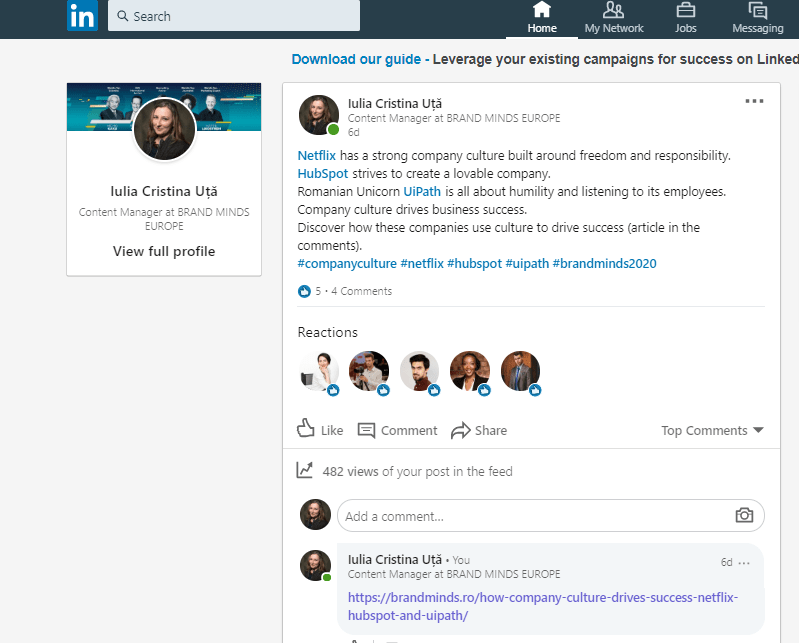
Growth Marketing Tactic #5 – Post native video on LinkedIn, Facebook, YouTube, Instagram and Twitter
Video is the best way to engage authentically with your customers. Although not everyone feels comfortable talking in front of the camera it’s a great way to get your customers to know you and build a connection.
All social media networks now allow users to post native videos. They encourage users to upload videos directly or go live on their platforms. As a result, video posts receive increased visibility.
Here are 10 smart ideas for video content you can use on LinkedIn and 10 Ideas to use Facebook Live in your Communication Strategy
Growth Marketing Tactic #6 – Pixel your visitor
Growth marketer Jeff Deutsch has this tip for marketers running Facebook ads: pixel your visitor, not your landing page.
Instead of placing your Facebook pixel on your landing page, place it on a blank HTML page. This page will pixel your visitors and redirect them to your landing page.
What does this tactic solve?
It tags people who leave before your landing page has loaded because they either lack patience or your landing page has a number of scripts that extend the loading time.
Jeff states this tactic is a way to stop losing 30% of your ad traffic.
![]()
Growth Marketing Tactic #7 – Facebook Messenger hack – the Auto-responder
Over 1 billion people use Messenger to connect with businesses every month.
MobileMonkey CEO Larry Kim found a way to take this opportunity to the next level: auto-responders.
In his article, Larry shows how to grow your Messenger subscription base with an auto-responder chatbot called Comment Guard.
Growth Marketing Tactic #8 – Gamification
Famous marketer Neil Patel lists gamification as a growth marketing tactic.
He recommends marketers to use gamification to their advantage by pulling their audience in with quizzes and polls to spark engagement and brand awareness.
To leverage gamification, marketers have to make content entertaining while also providing value.
According to Neil, gamified systems must tick three boxes:
- Give users motivation to do something (emotional investment, the promise of reward, etc.);
- The ability to complete the action;
- Provide a trigger or cue to complete the action.
Growth Marketing Tactic #9 – Piggyback on a thriving network
In 2016, Spotify integrated with Facebook Messenger allowing people to share their Spotify songs or playlists directly within a chatbox. This integration accelerated Spotify’s growth through referral traffic. Ultimately, millions of Facebook users also became advocates of the music platform because it filled the users’ desire to share their music socially.
Airbnb’s integration with the Craiglist platform is now the company’s most famous growth hack. In 2010, looking to access Craiglist’s huge user base, Airbnb built a bot to piggyback the platform. Check out the Airbnb growth case study.
What is the secret of successful integration with another platform?
Start with the perfect experience and work backwards.
Growth Marketing Tactic #10 – H.A.R.O
H.A.R.O. stands for Help A Reporter Out.
Help A Reporter Out is a media services company with over 35,000 journalists and 800,000 source members which started out as a Facebook group.
HARO allows sources to find topics related to their expertise, industry or experience while allowing journalists and bloggers to spend more time writing and less time sourcing. Subscribe as a source and you could be featured in mainstream media.
It’s a long-term effort but the potential benefits are worth it: increased brand awareness, augmented SEO, building business opportunities, establishing leadership credibility and garnering high levels of engagement on social.
What growth marketing tactics do you employ to grow your business?
Join the Conversation
We’d love to hear what you have to say.
Get in touch with us on Facebook Group and Twitter.
This App Helps you Choose your Clothes According to your Musical Taste
Would you let an app choose your clothes depending on your musical taste?
Let’s find out!
Fashion and music – two expressions of one’s individuality. The music we are listening to is speaking to the world about who we are, it has the power to accompany our mood or change it. The clothes we wear speak about us before we even say a word. They influence our self-esteem and others’ first impression of us.
Music influencing fashion (and vice versa) is a significant aspect of our culture: creativity flows naturally from music stages to fashion runways and back.
The years of rock-n-roll music have translated into blue jeans fashion styles. You could spot a punker a mile away: mohawk hairstyle and black-leather jackets. And we could go on and on. There is a plethora of books studying this cultural phenomenon of music and fashion influencing each other. By the way, choose which band were you listening to in the 90s, Metallica or Depeche Mode, and I’ll tell you what clothes you were wearing!
Although it’s nice to go down memory lane, this article is not about music and fashion history.
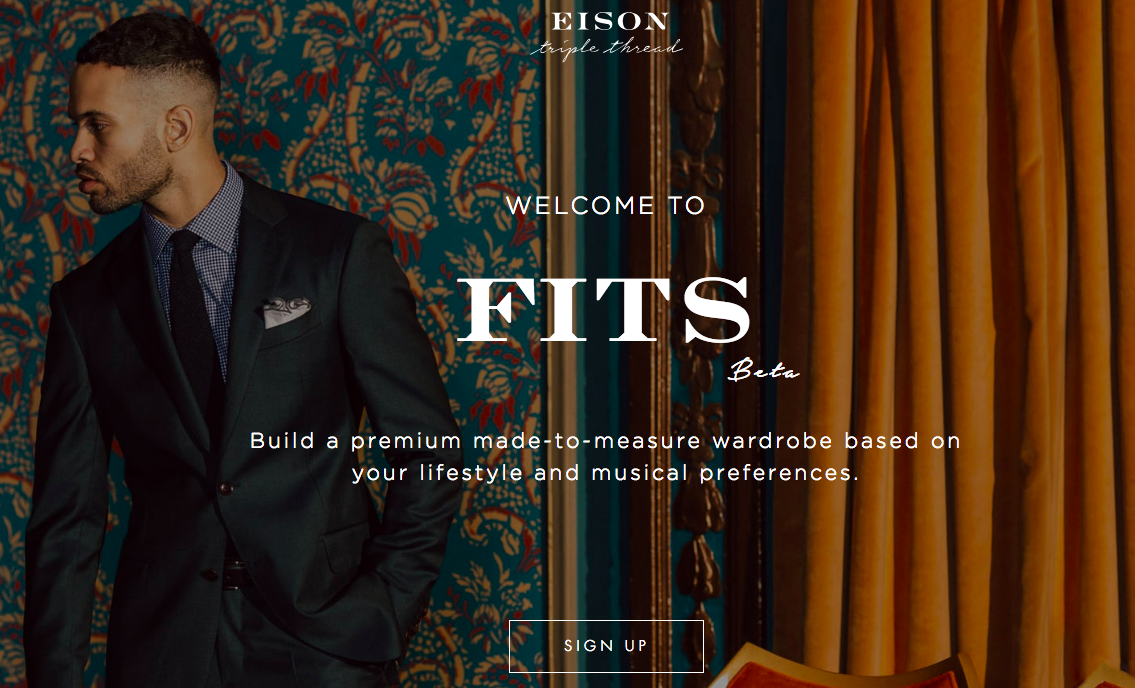
image source: eisontriplethread.com
Fashion + Music + AI = Happy Customers
One start-up founder believed in music’s power to help men choose better and more appropriate attires for various occasions. The man’s name is Julian Eison and the app is called FITS.
What is FITS?
FITS is an app, which suggests clothing for men based on their music preference.
How does FITS work?
The user logs into his Spotify account, allowing the app to access his listening data. He is then prompted to take a lifestyle quiz, which provides Julian’s company, Eison Triple Thread with important information such as the type of work and the industry of his client.
Once all the information is received, the app’s algorithm sifts through user’s Spotify data and pairs music genres and favourite artists with styles. The user then looks through these suggested outfits, giving his feedback with likes and dislikes. Finally, he’s served up Eison Triple Thread pieces that Eison says will properly reflect his personality as well as personal style. And because all the company’s menswear is made to measure, user can further customize each product, like choosing colour pairings or materials.
FITS is different than the e commerce recommendation engines
We are all accustomed to the recommendations we receive when we purchase items from an e commerce store. But according to his interview with Racked.com, Julian says FITS is not just another recommendation engine.
FITS is a more advanced way to recommend things to shoppers than by just saying, ‘Hey, someone bought this five minutes ago, you should too!’ The innovative app is able to add some nuance to the process, because the algorithm makes more fine-tuned recommendations the more it’s interacted with.
Julian Eison
We write emails with the help of AI, we let chatbots talk to our business customers and instruct virtual assistants to conduct medical interviews, why not follow music-based fashion recommendations made by AI?
3 Growth Hacks Spotify uses in Brand Strategy
How did Spotify use growth hacks in their brand strategy?
Spotify Technology SA is a Swedish entertainment company founded by Daniel Ek and Martin Lorentzon. They launched their music, podcast, and video streaming service on 7 October 2008. The company’s title is a combination of “spot” and “identify”.
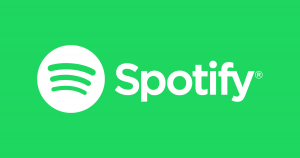
image source: spotify.com
Spotify by numbers
Spotify is currently available in 65 countries all over the world and provides access to more than 35 million songs.
Spotify is a freemium service: it offers free basic features with advertisements or limitations, while additional features, such as improved streaming quality and music downloads, are offered via paid subscriptions.
On February 2018, the Swedish program went public on the New York Stock Exchange and its shares began trading on April 2018.
As of 2018, Spotify has 170 million active users, including over 75 million paying subscribers.
image source: techcrunch.com
Main reason for success – a disruptive product
On the music market, at the moment Spotify was launched, there were other products but they didn’t cater to market’s needs for music streaming services.
Spotify’s Unique Value Proposition was to give users complete control and access to any song, on demand, for just $10/month, along with a free option that offered more than simple radio-style streaming—not to mention the fact that it was totally legal.
It was an instant success because it filled a market gap.
Spotify revolutionized the way people listened to music. It became popular with music streaming services consumers because it puts the control firmly in the user’s hands, allowing them to select specific songs and create playlists.
Spotify is interactive
One of its features decreased the friction of adoption: it allowed users to upload local tracks so they don’t have to leave their own libraries and playlists behind in order to make the switch to Spotify.
Spotify filled the need for consumers but was able to control its growth.
Rolled-out with an invite-only system which helped the company generate buzz and increase demand through perceived scarcity.
Spotify attracted the tech-loving early adopters.
It integrates with today’s shareable world: it’s easy to share because each track, album and playlist has a unique URL. And it also caters to users’ need to share the music with his/her friends on social platforms.
Here are 3 growth hacks Spotify uses in brand strategy
Partner Up – Spotify & Starbucks
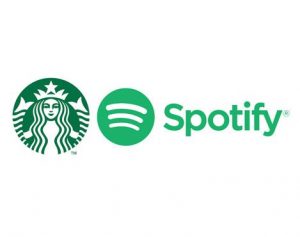
image source: news.starbucks.com
In 2016 Starbucks and Spotify became partners.
The goal of this partnership was to drive listenership to the streaming service and allow the chain coffee shops’ customers to easily engage with music played at its 7,500 locations.
Through the Starbucks app, via location sharing, customers were able to favorite and add the music playing during a visit to a store. They were also able to influence Starbucks’ future in-store playlists. Spotify’s streaming became integrated with the beverage brand’s popular mobile loyalty program, My Starbucks Rewards. My Starbucks Rewards and Spotify users earned “stars as currency” for subscribing to Spotify Premium. Customers who purchased Spotify’s streaming packages were also eligible to earn more rewards points, which could have been redeemed for free beverages.
Piggyback on a thriving network – Spotify & Facebook Messenger
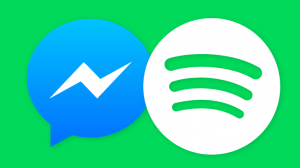
image source: techcrunch.com
In 2016, Spotify integrated with Facebook Messenger allowing people to share their Spotify songs or playlists directly within a chat box. Because each track, album and playlist has a unique URL, Spotify is sharing-friendly.
This integration accelerated Spotify’s growth through referral traffic. Ultimately, millions of Facebook users also became advocates of the music platform because it filled the users’ desire to share their music socially.
Data driven & User-Generated Content
‘Thanks 2016, it’s been weird”
Using their data insights about users’ listening habits, Spotify put together their best ad campaign so far.
The campaign is called Thanks 2016, it’s been weird, it was released on October 2016 and featured outdoor billboards containing funny messages based on the weird, wonderful and emotional playlists Spotify users had created.
During the course of the campaign’s run, Spotify subscription growth easily broke all company records. The increase in monthly active users exceeded targets, with over 1 billion streams directly attributed to the campaign, and over half a million reactivated users.
The central focus of the campaign was customisation: Spotify wanted to re-state the freedom users have to mix up their playlists and get creative.
Did you like our article?
Subscribe to our newsletter so you can receive our content!
